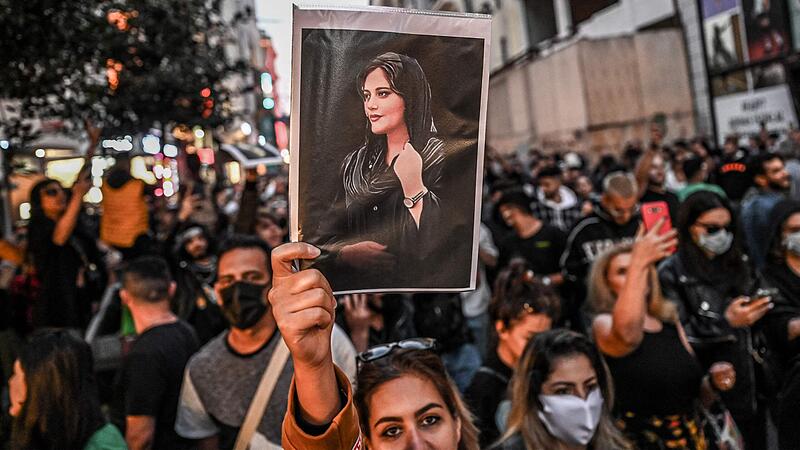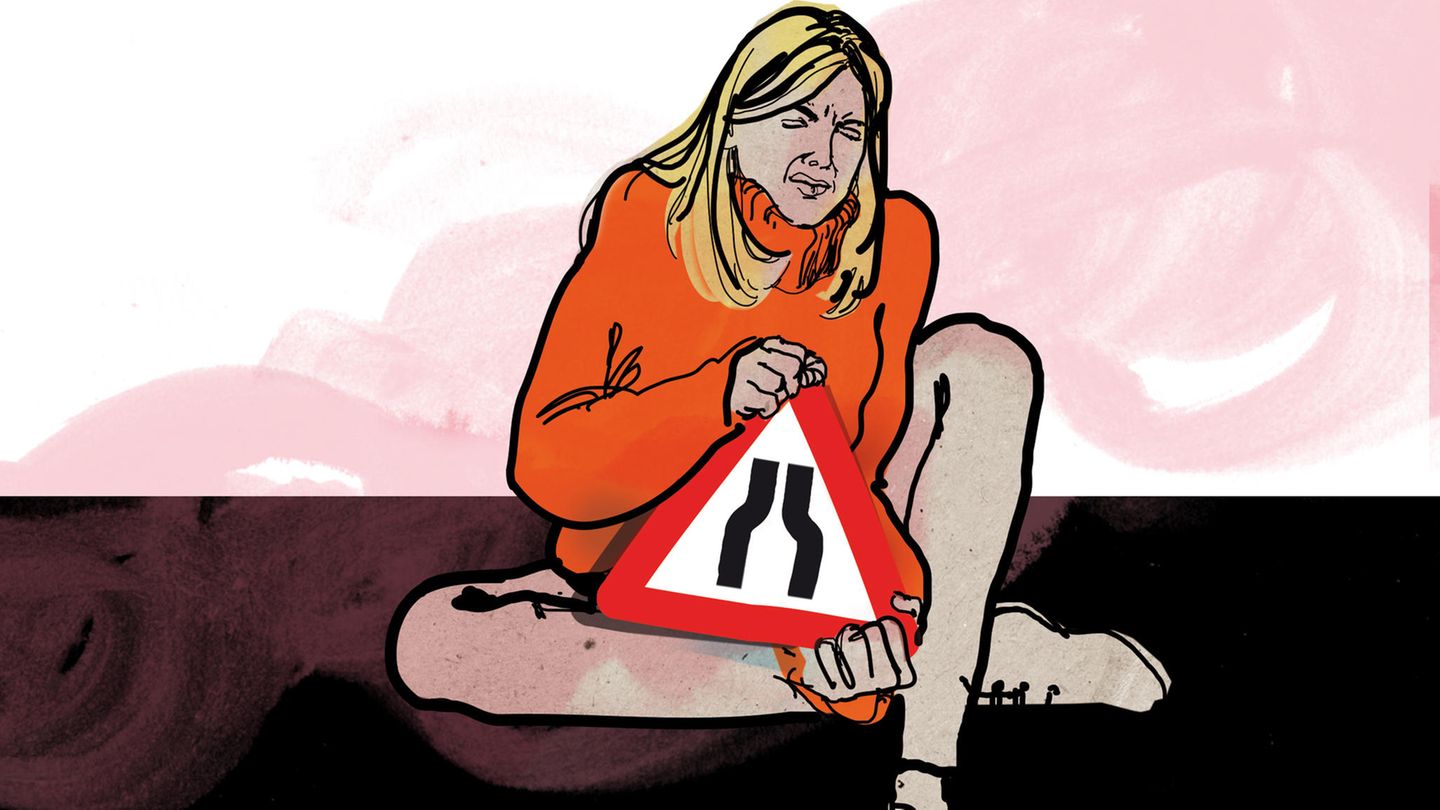Image: AFP
Under the night sky of Tehran, the lights of neon signs dance on the shops, a warm breath of late summer blows through the streets. In a small café in the north of Iran’s capital, Jaleh sits and sips her iced coffee. Your thoughts are far away from the hum of the metropolis. Like many other Iranians, she is thinking about last year’s protests these days, triggered by the death of the Kurdish woman Jina Mahsa Amini.
The notorious moral guards had violently arrested the young woman because she was said to have not worn her headscarf properly. She fell into a coma and died. Just a few days later, the worst uprisings in the country in decades broke out. The young generation in particular took to the streets against the repressive politics. Jaleh had hardly demonstrated before. “With Mahsa’s death, I felt like I had to face my fear. At first I was afraid, but then it became less and less.”
Jaleh is in her mid-30s, she has studied and is independent. She beams as she speaks. Her hair is tied back. Like many other women in the café, she has long stopped adhering to Islamic dress codes. The protests in the fall of 2022 paralyzed the country for several months; security forces violently suppressed them until they finally subsided. But as a sign of silent protest, many Iranian women in major cities are still ignoring the obligation to wear a headscarf to an unprecedented extent.
The nation feared for the 22-year-old for days after images emerged showing Amini in her death throes in the intensive care unit. “I had the feeling that it could be me. That woke me up,” says Jaleh. “It may sound depressing that only the death of a young woman triggers such a feeling in me, but that’s how it was.”
Since then, Iran’s leadership has been in a dilemma. The government is not making any concessions to the protest movement. But calls for more toughness are also being implemented with caution by the leadership, knowing full well that new protests could follow. At the same time, the civil disobedience of many Iranian women is a thorn in the side of the hardliners, as the obligation to wear a headscarf is one of the ideological pillars of the Islamic Republic. The government has so far responded with threats, arrests and a new headscarf law that provides for draconian penalties.
Rejection of political leadership
Meanwhile, more and more Iranian women are realizing that nationwide control of the headscarf requirement by security forces alone is impossible. In the past, a large part of society adhered to clothing rules, even in the face of social control, says Tareq Sydiq, protest researcher at the University of Marburg. “This norm has been completely broken. And it is very difficult to restore this fear,” says the expert.
The skepticism and rejection of large sections of society towards the spiritual and political leadership is now evident, says Sydiq. “With the protests, the weakness of the system has become much clearer.” Nevertheless, the state leadership appears to have regained the upper hand. “The regime has managed to prevent major breaks within the power apparatus. And this means that it can now appear more self-confident than it did a year ago.”
Since the founding of the state after the Islamic Revolution of 1979, Iran has repeatedly been rocked by major crises. The first Gulf War with neighboring Iraq still shapes the collective memory today. Millions of supporters of the so-called Green Movement took to the streets in 2009 and complained about election fraud. But the social gaps between supporters and critics of the system have never been as deep as they are today, complain contemporary witnesses of the revolution and the few critical voices of politicians in the reform camp.
Women from religious and traditional families are also watching domestic politics with concern. “The hijab once had a high status in Iranian society before it was made compulsory,” says Asam Abbasi. The headscarf is a religious obligation for devout Muslim women, she adds. Abbasi is the leader of a party that advocates for women from a religious perspective.
Heated mood in the country
Abbasi complains that the unyielding style of politics has led to confrontations and a heated atmosphere in the country in recent decades. In view of the numerous violations of the headscarf requirement, the authorities should also think about giving women the choice, says the politician. “If they want to preserve the system and Islam, they should introspect and listen to the voice of the people.”
This is also why the focus is on the young generation, which is disillusioned with the politics of the Islamic Republic and wants faster change, a radical step. Opposite them are young people who unconditionally support the system and are prepared to commit violence in return. The government is not in a position to capture this polarization, says political scientist Sydiq. “These two positions are irreconcilable and are now clashing. And I believe that when the old generation slowly leaves and the younger ones take over, things will come to a head.”
The change since the demonstrations has therefore manifested itself more on a cultural, less on a political level. In their own estimation, women like Jaleh, who stand between generations, still benefited from the protests. “I have gained more self-confidence. Even when I felt that my choice of clothing didn’t please those around me, they preferred to hold back,” says the woman in the café. “I’ve been wearing what I want for a long time now. Nobody has the right to object.”
My themes
For your saved topics were
new articles found.

info By clicking on the icon you can add the keyword to your topics.
info
By clicking on the icon you open your “my topics” page. They have of 15 keywords saved and would have to remove keywords.
info By clicking on the icon you can remove the keyword from your topics.
Add the topic to your topics.
Source: Nachrichten




